 Occasionally, very occasionally, a client will ask me advice on how they should judge their advertising.
Occasionally, very occasionally, a client will ask me advice on how they should judge their advertising.
It’s easy to tell a terrible ad from a great one, but it’s rare to have such a big gap between ideas.
A more likely comparison be trying to assess average against quite good?
good against great?
Some creative people will advise that ‘If it’s right, you’ll feel it in your gut’.
Sometimes true, but not really helpful.
I tend to give them a copy of the page above.
It lays down a more objective way of judging ideas of advertising.
It was written by the Chairman of the Campaign Press Jury in 1980, Jeremy Sinclair.
Just over a decade later, somebody at Saatchi’s smuggled me out a U-Matic* a talk he gave about tv advertising.
(*A U-Matic was a kind of real-world, 3D version of a Quicktime file that came in a box about the size of a box of Frosties.)
 Why would a young gentleman from the Sorbonne in Paris go to Watford to learn how to write adverts?
Why would a young gentleman from the Sorbonne in Paris go to Watford to learn how to write adverts?
I was 21/22 and, thinking it was time to a get a job, bought a copy of the London Times and wrote to every advertiser.
The idea was to test my letter writing.
Most were companies looking for employees.
One was for Watford College of Art, for their forthcoming course on copywriting.
I duly wrote to them, a similar letter sent to all the others, words to the effect of whatever it was they were looking for, I was it.
I went off to Algiers for a couple of months or so, as you do, and came back to find lots of replies, mostly polite rejections. The Watford one said, please do the enclosed Test.
There was a second letter from them saying they hadn’t received my Test but would I come for an interview? The date offered was the following day.
I borrowed the airfare from my mother, did the Test on the plane and presented myself at Watford College, Hempstead Road, Herts.
The two interviewing tutors went to great pains to explain they only took as many students as they felt could find jobs.
The were 100+ applicants and 11 places. They’d let me know.
The next day they did. I was in.
What did Watford teach you?
Lots of things. What was expected of copywriters, how to write an ad, what a logo was, what a double page spread was, what account men were, how to type a script (video on the left, audio on the right).
Remember, I knew nothing.
Possibly the most important thing they introduced us to were the D&AD annuals.
I remember seeing a Christian Aid ad which showed a fat sausage-fly and had the headline: ‘Fresh food is now flying in to Biafra.’

I thought I can do that.
Also, coming from Watford, you could get a meeting at most agencies.
Which agencies rejected you and your cumbersome portfolio when you were released from Watford?
I was turned down by a small agency who specialised in travel, they handled the Channel Islands.
The reason for rejection was they didn’t think I would stay.
Another chap on the course got it.
That was the only agency I went where they had a known vacancy.
Otherwise the idea was to see as many people as possible hoping that it would lead somewhere.
My portfolio wasn’t cumbersome. It was an A4 sized book containing about 30 plastic sheets that you slipped your copy between.
Not like now, no pictures, just words describing the picture and then the headline and the copy.
Why Cramer Saatchi? Why not join a proper agency?
It was written : Cramersaatchi. They did great work, they were recommended by Dan Levin of Pritchard Wood, who knew Charles.
What was the company you joined like?
There were four people plus a secretary.
Ross & Charles, John H & Mike C + Gail.
The offices were two rooms above the café on the corner of Tottenham Court Road and Goodge Street. (The same building housed Michael Peters, Boase Massimi Pollitt and David Putnam.)
Why did they hire you?
I wrote a letter which said: ‘Dear Sir, I am writing for a job. I want to write for a living.
Even if you haven’t a vacancy, can I come and show my work?
Yours’, etc.
I read somewhere that Charles Saatchi especially liked an ad from your book for a slimming product, a first person story with the headline: ‘Two men offered me their seats on the bus. I needed them both’.
It’s true, that was the one he liked.
Do you remember your first Cramersaatchi brief?
He and Ross were working for a Dutch department store whose name escapes me, but the idea was that shoes were in the basement, then trousers and skirts, next floor were tops, well you get the idea.
So as a test, they said, do us an ad. I came back with my effort and it was one of the thrills of my life to see the legendary Ross Cramer drawing it up.
The ad? Right hand page: Big headline: ‘How can you find what you want when it’s all over the shop?’ Left hand page: Picture of a man or a woman from behind scratching their head looking at a very long store guide board. What did Ross Cramer bring to the party?
What did Ross Cramer bring to the party?
Ross was talented, irreverent and fun. If Charles was the ambition, Ross was the humour.
What was your first impression of Charles?
I took one look and thought to myself, he’ll do.
While Maurice appreciates the theory, Charles is only interested in the practice.
He only ever wanted to know if the work was good. Nothing else mattered.
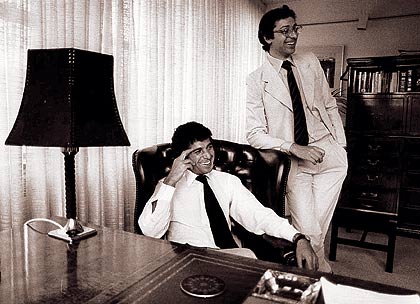
You worked with Sir John there?
John, as we knew him in those days, worked primarily with Mike Coughlan, then Chris Martin.
The only thing I specifically remember working on with John was the HEC antismoking campaign.
However, he was supportive and encouraging to Bill Atherton, (my a/d), and me.
He had been in the business for years, won awards and we were as green as can be.

Do you remember your first ad that ran?
I think it was for Island Records, but it was certainly no great shakes.
Or it was for the HEC: ‘What happened to Kilmarnock’s children’s teeth when we put fluoride in the water supply?’
John Knight was an incredibly influential but underrated Art Director, did you ever work with him?
He worked for us for a while. A lovely, gentle soul.



In his book, John Hegarty says he saw your rough of the ‘Pregnant Man’ ad before it was presented it to Charlie, then went straight to his office and threw his own work on that brief straight into the bin.
Were you as confident Charles would buy it?
I didn’t know.
I did worry what people would make of it. This was 1969, and it was a strange picture.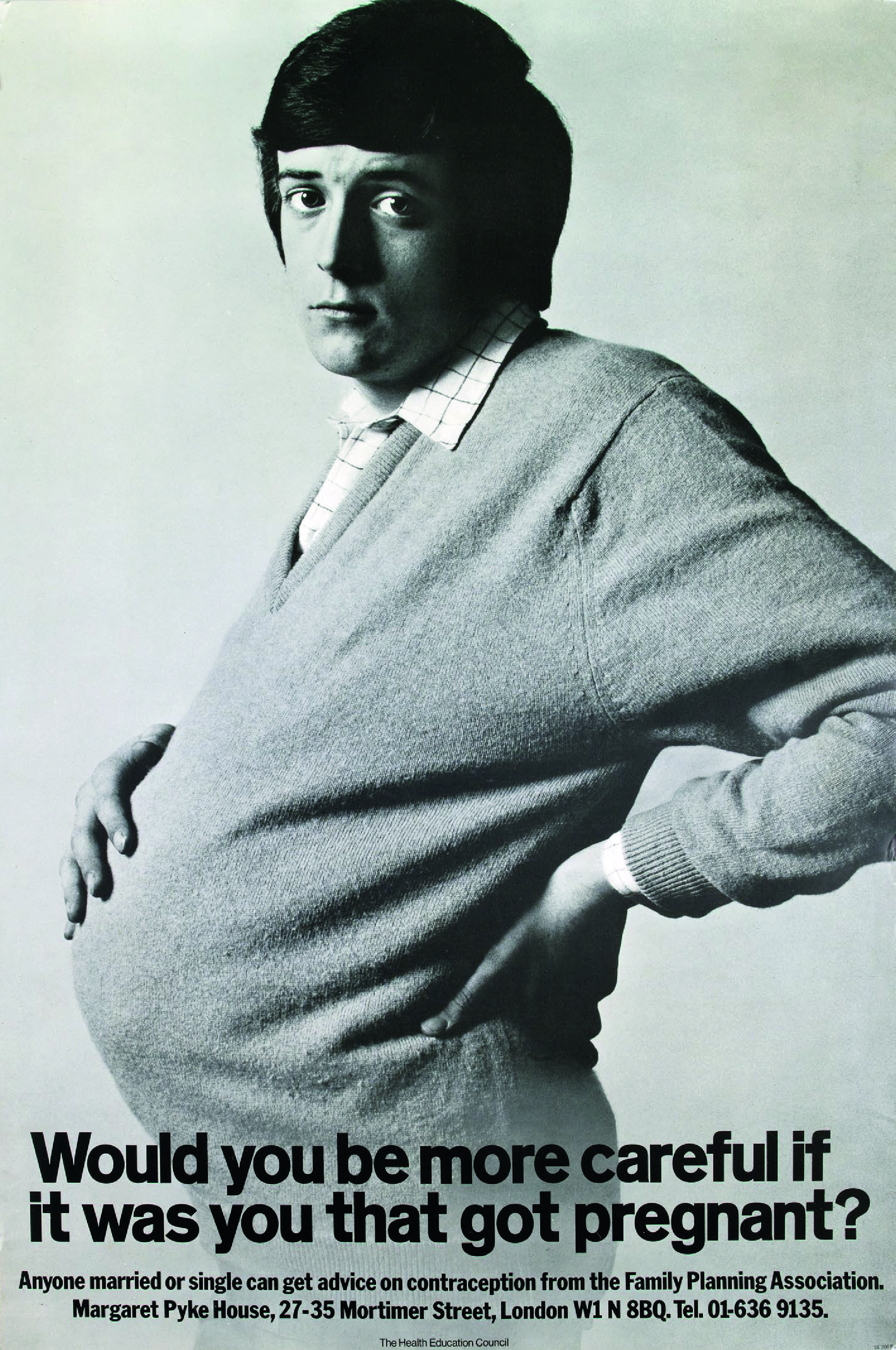
Do you think the tone of voice used on the Health Education Council could be effective today? It’s like a caring, but stern parent.
(Today, the Government are seem to want to be your best friend; ‘Hey You, Join the let’s not get females pregnant gang! #Iheartnotimpregnatingfemales’).
I hope we didn’t sound too stern.
More often than not, we asked questions.
For the Family Planning Association ‘What are your chances of getting pregnant tonight?’, for the antismoking ‘Is it fair to force your baby to smoke cigarettes?’, or
Family Planning again ‘Would you be more careful if it was you that got pregnant?’. A picture of the Creative Department turned up in The Sunday Times with a story about transfer fees.
A picture of the Creative Department turned up in The Sunday Times with a story about transfer fees.
Did that make you feel great or a bit embarrassed?
Nothing really. It was just Charles looking for a headline.
The idea behind Cramer Saatchi was to charge a fortune delivering creative work and awards for big non-creative agencies. Why the change in direction?
Becoming an agency was a natural progression. Clients were coming to us direct.
Ross didn’t fancy it, so Maurice joined in.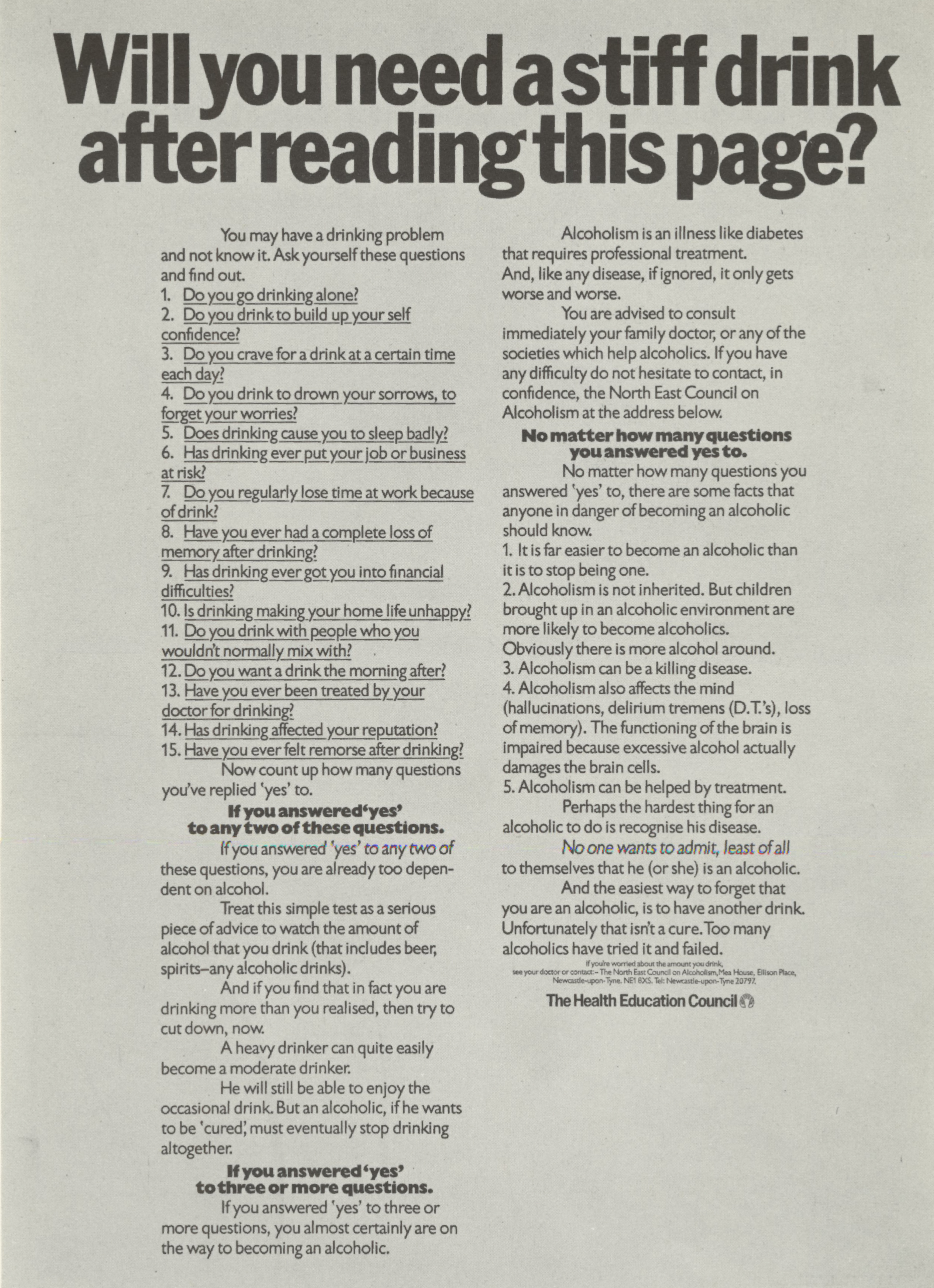
So, are there any ads in D&AD that were created by you but credited to someone else?
Occasionally we entered ads into D&AD that no-one was prepared to own up to.
I think we invented two characters, Don DiLauro and Jake Stouer.
One ad was ‘Has your get up- and -go got up and gone?’ Charles’ I think.
Later I entered some work under the name J. Rome to avoid conflict problems – We handled both Allied Breweries and Scottish & Newcastle. 
Who did you want to be; Ed McCabe? Tony Brignull? Truman Capote?
All wonderful, but not what I wanted to be.
I imagine Charles wasn’t an arm around the shoulder type of boss?
No, thank God.



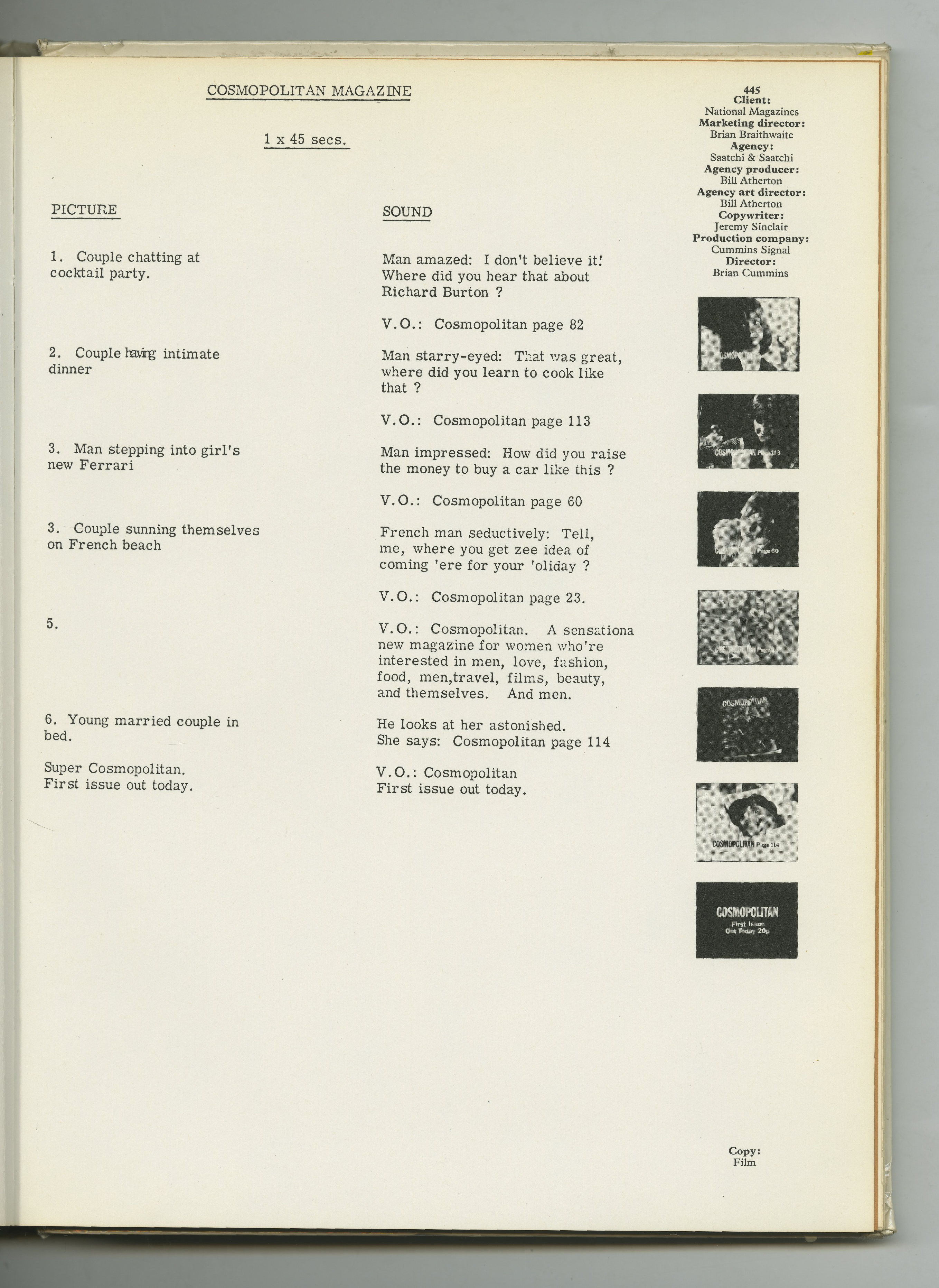 Why were you made Creative Director?
Why were you made Creative Director?
Bill A and I were about to leave to join Webster at BMP.
Charles said, stay and when John goes I’ll make you creative director.
We stayed and he did.
Who was your first hiring?
I don’t want to be rude to anyone but it took me a while to get the hang of hiring.
My early choices were hard work.
Then I discovered Ron Mather from FCB and Andrew Rutherford from Benton and Bowles. The agency and my life were instantly better.
You were the first Creative Director to pay a writer £100k.
Was that a publicity stunt or was it based purely on Geoff Seymour’s talent?
 A bit of both. We were winning clients at breakneck speed. British Airways had landed and we were short of senior talent.
A bit of both. We were winning clients at breakneck speed. British Airways had landed and we were short of senior talent.
Seymour made good copy and a good headline.
 Did Charles still write?
Did Charles still write?
Yes, Charles wrote occasionally – on the Tories and of course, the Silk Cut campaign which he invented.
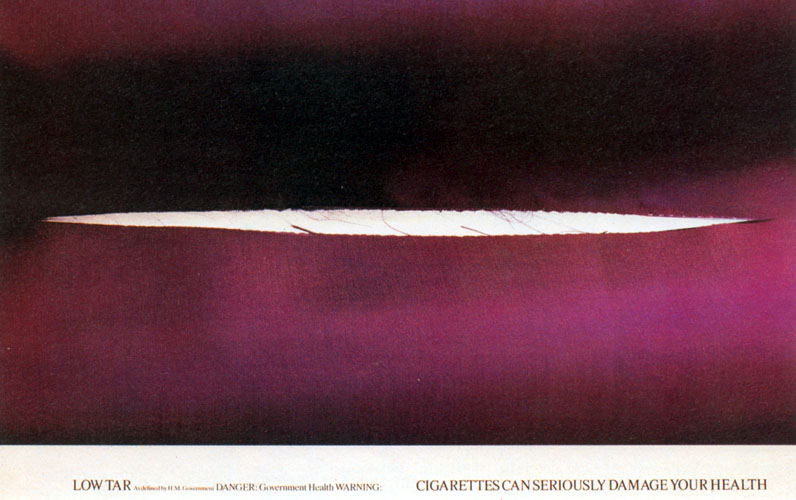 I’ve heard that Charles had the idea for Silk Cut at CDP?
I’ve heard that Charles had the idea for Silk Cut at CDP?
If that is so, I never knew it.
I don’t know if the painting that inspired him had been done by then.




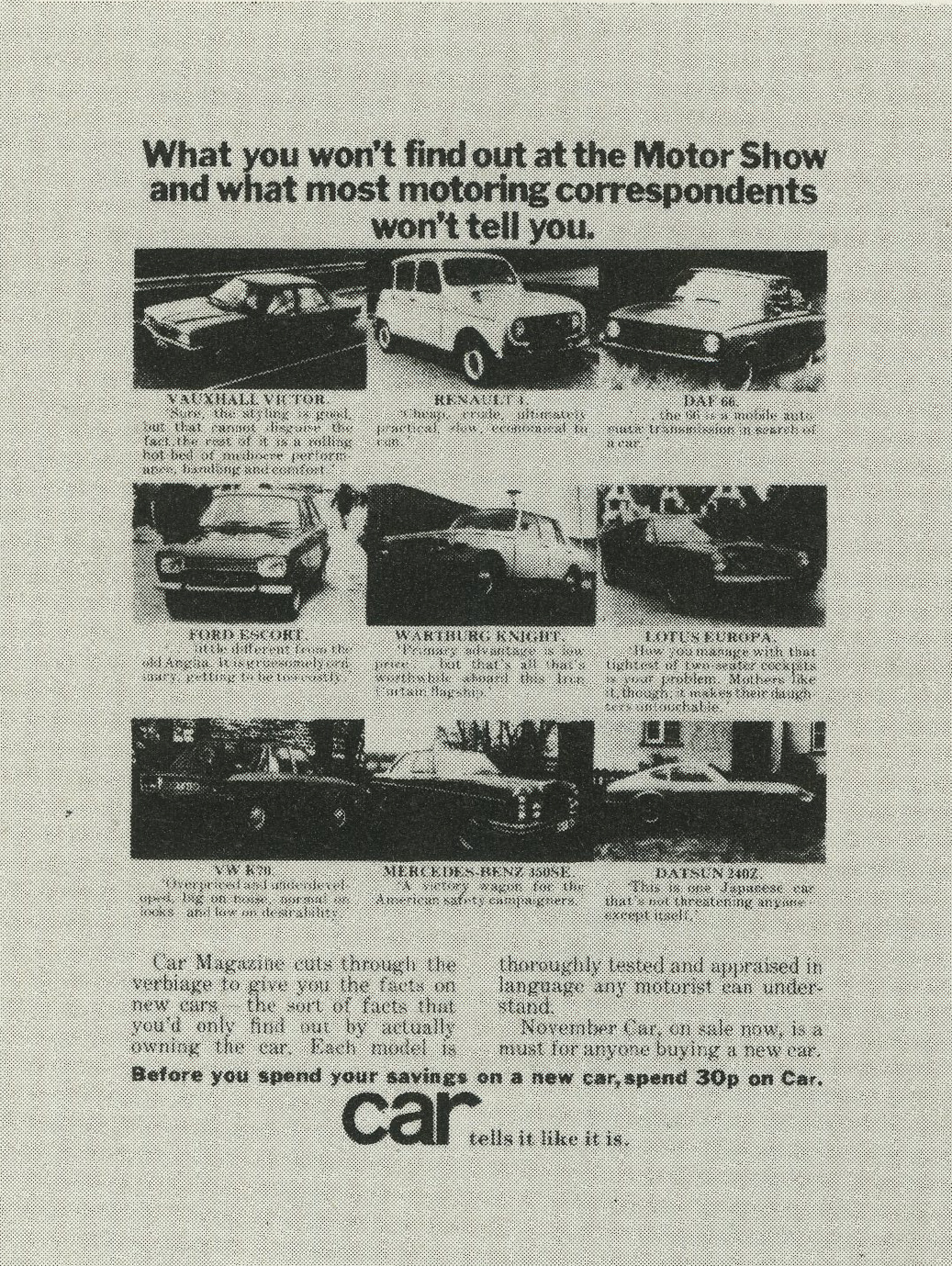
From the outside it appears that you stopped writing very early?
That’s the downside of being Creative Director.
But there was always the Tories to keep you at it.

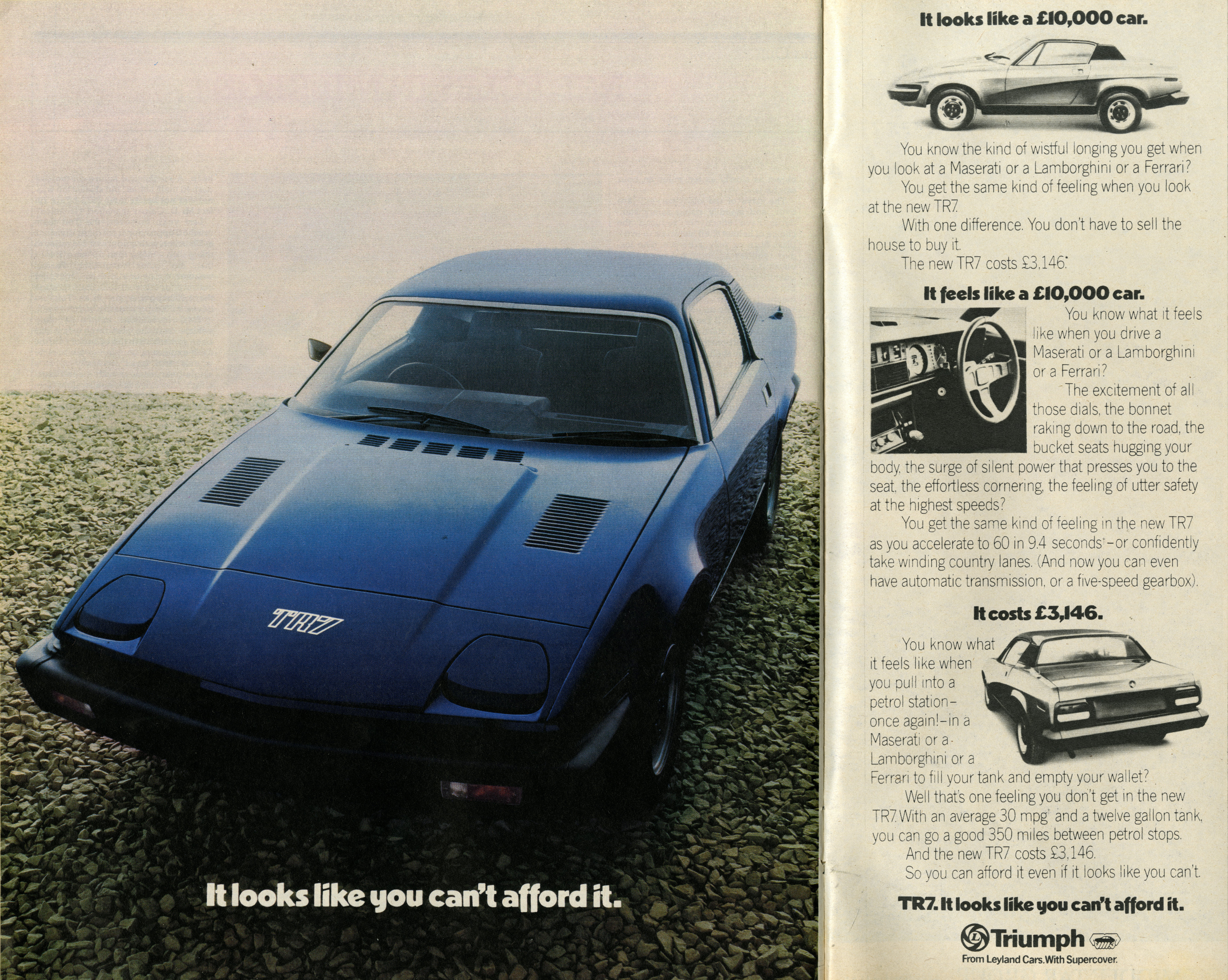
Paul Arden is the best Art Director. Full stop.
His work just doesn’t date.
Was he your hiring?
I was interviewing a writer called John McGrath and he asked if he could bring his art director.
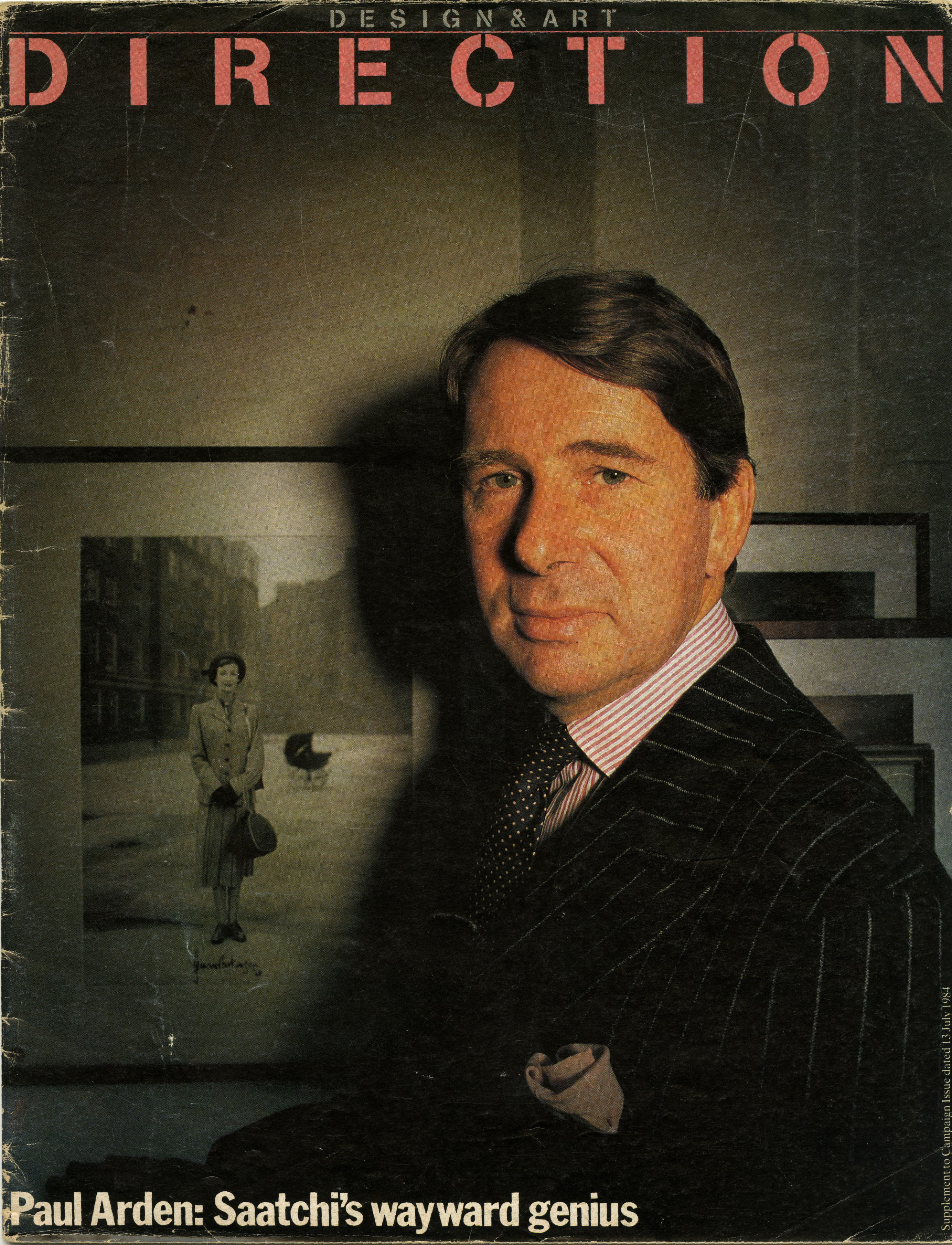 He had the reputation of being crazy, perfectionist, completely out off the wall.
He had the reputation of being crazy, perfectionist, completely out off the wall.
You must’ve been the only guy in the world that would make him ECD, but it worked brilliantly?


 You know why? He was the only one who, when he showed you work, said ‘What’s wrong with this?’ Everyone else wanted you to say how great their stuff was.
You know why? He was the only one who, when he showed you work, said ‘What’s wrong with this?’ Everyone else wanted you to say how great their stuff was.
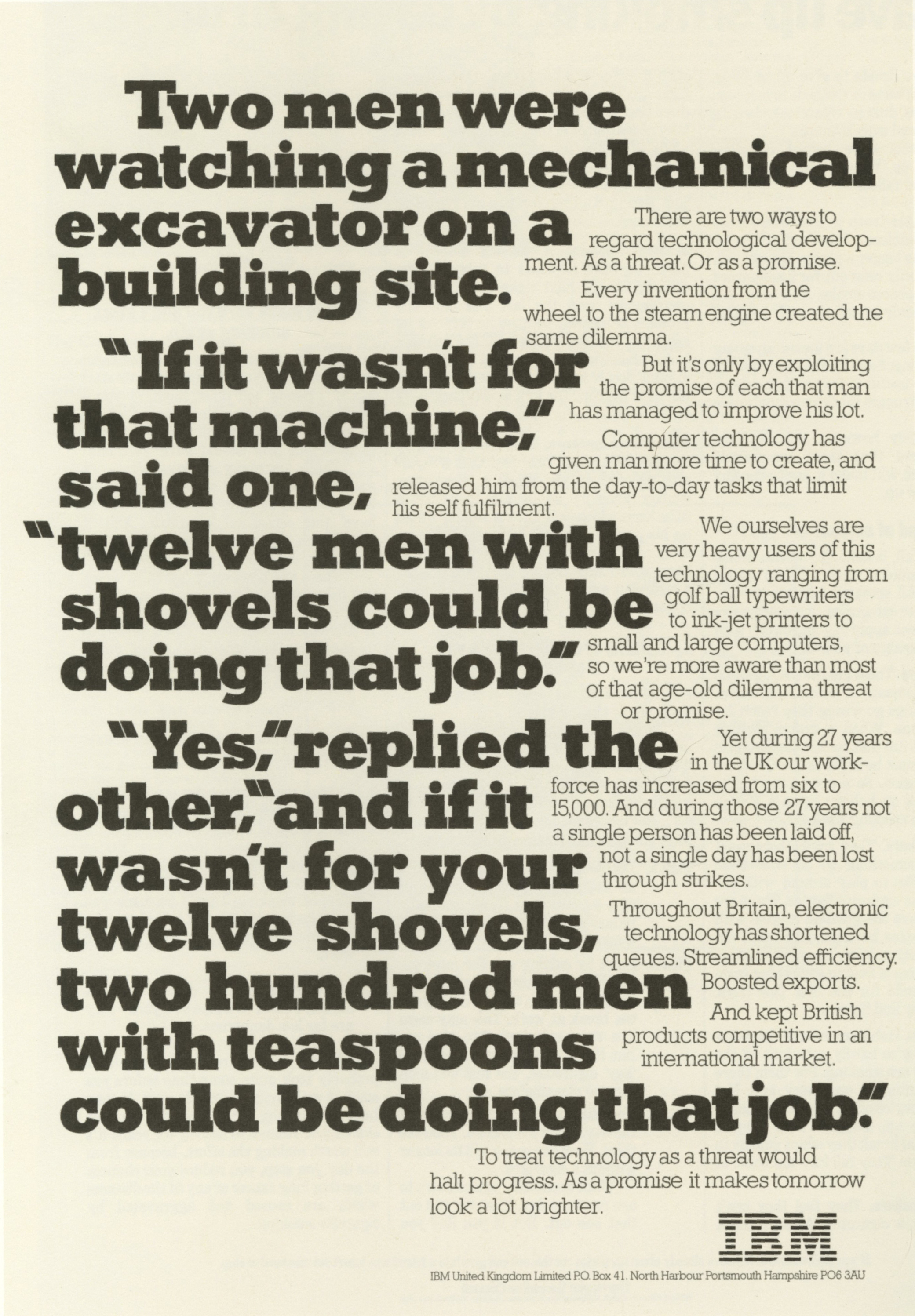


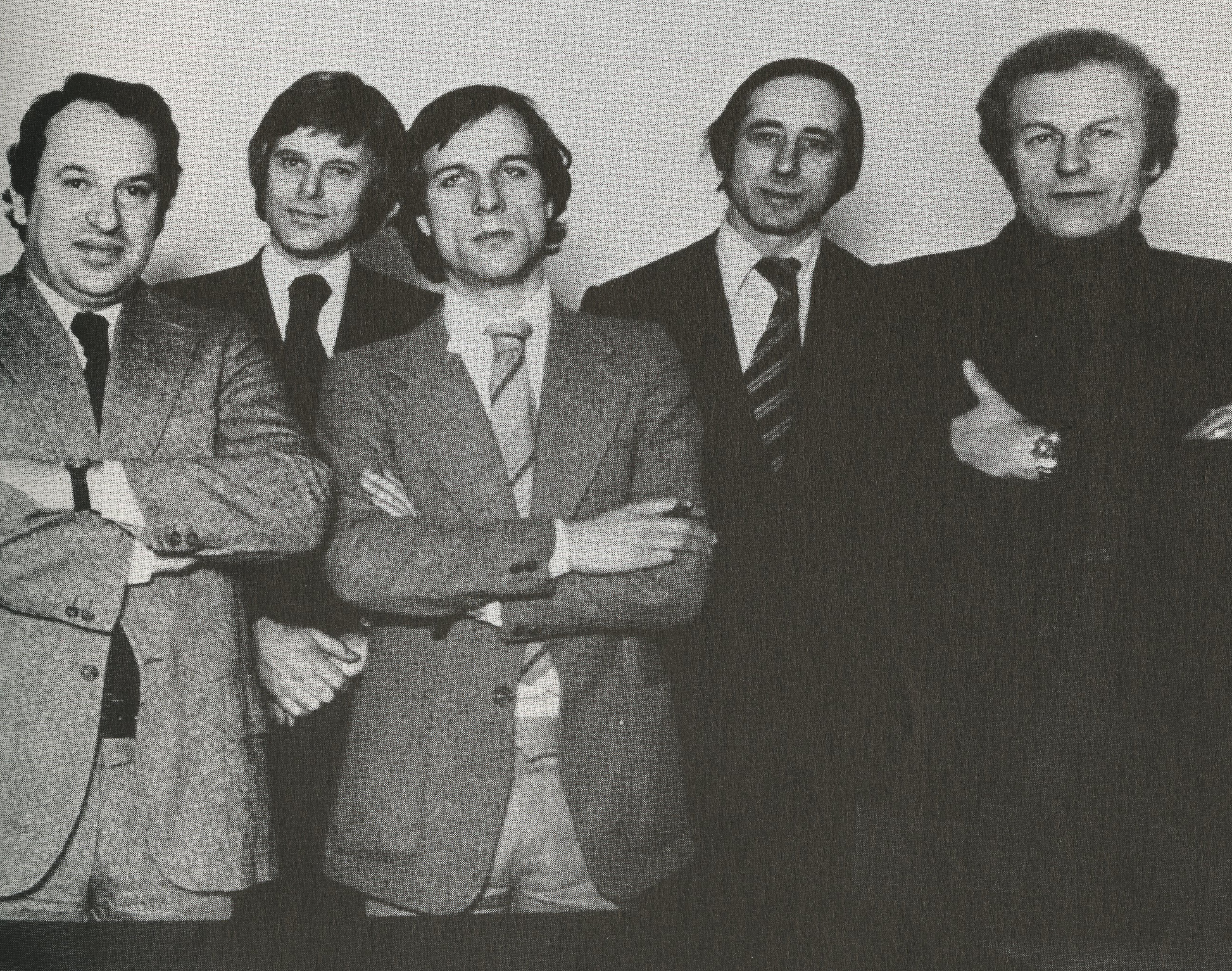
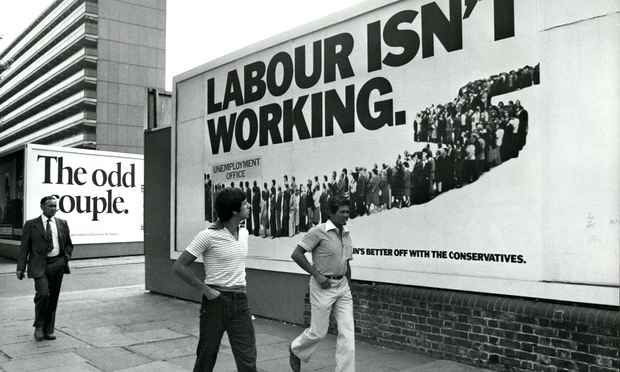
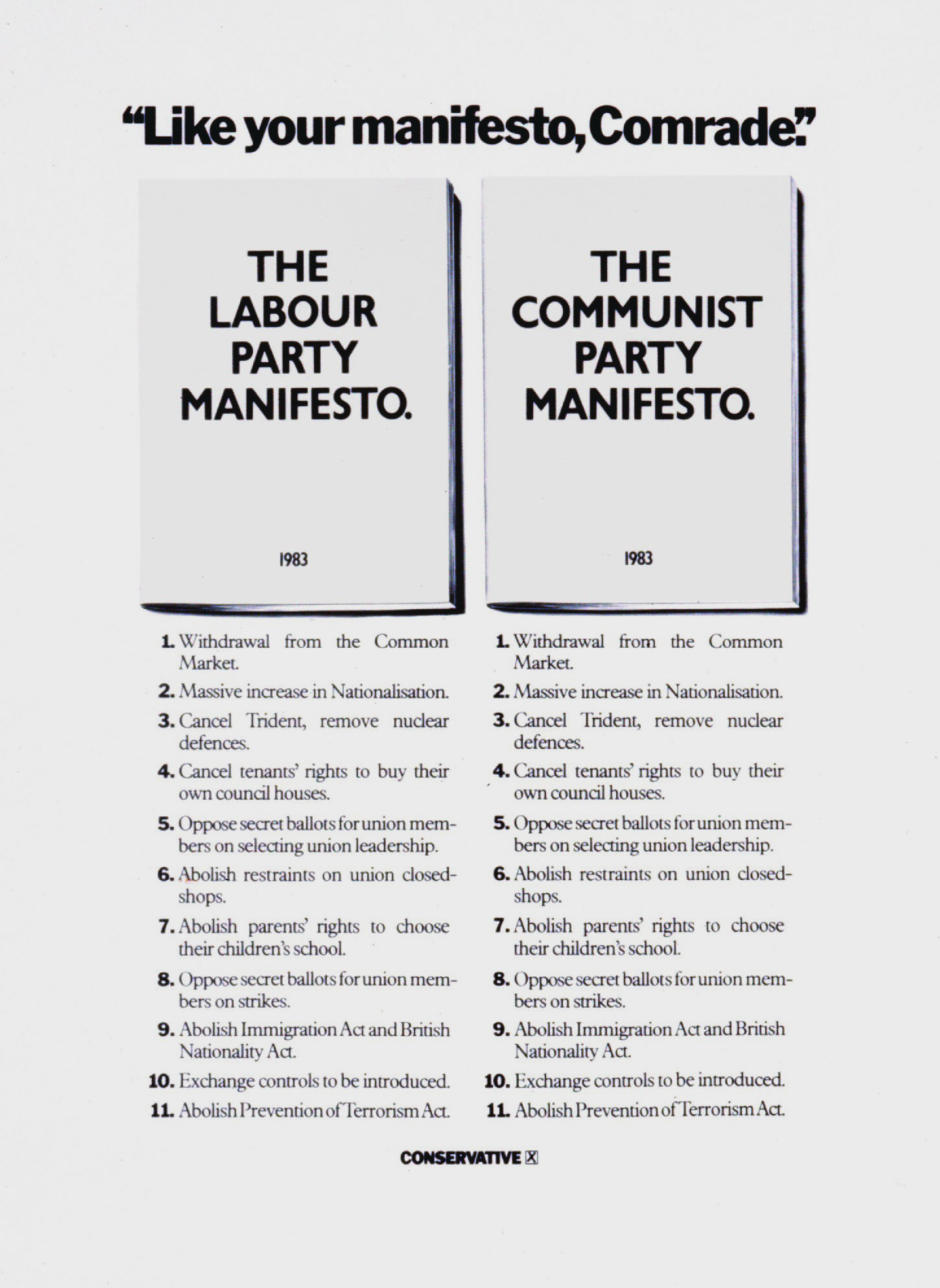




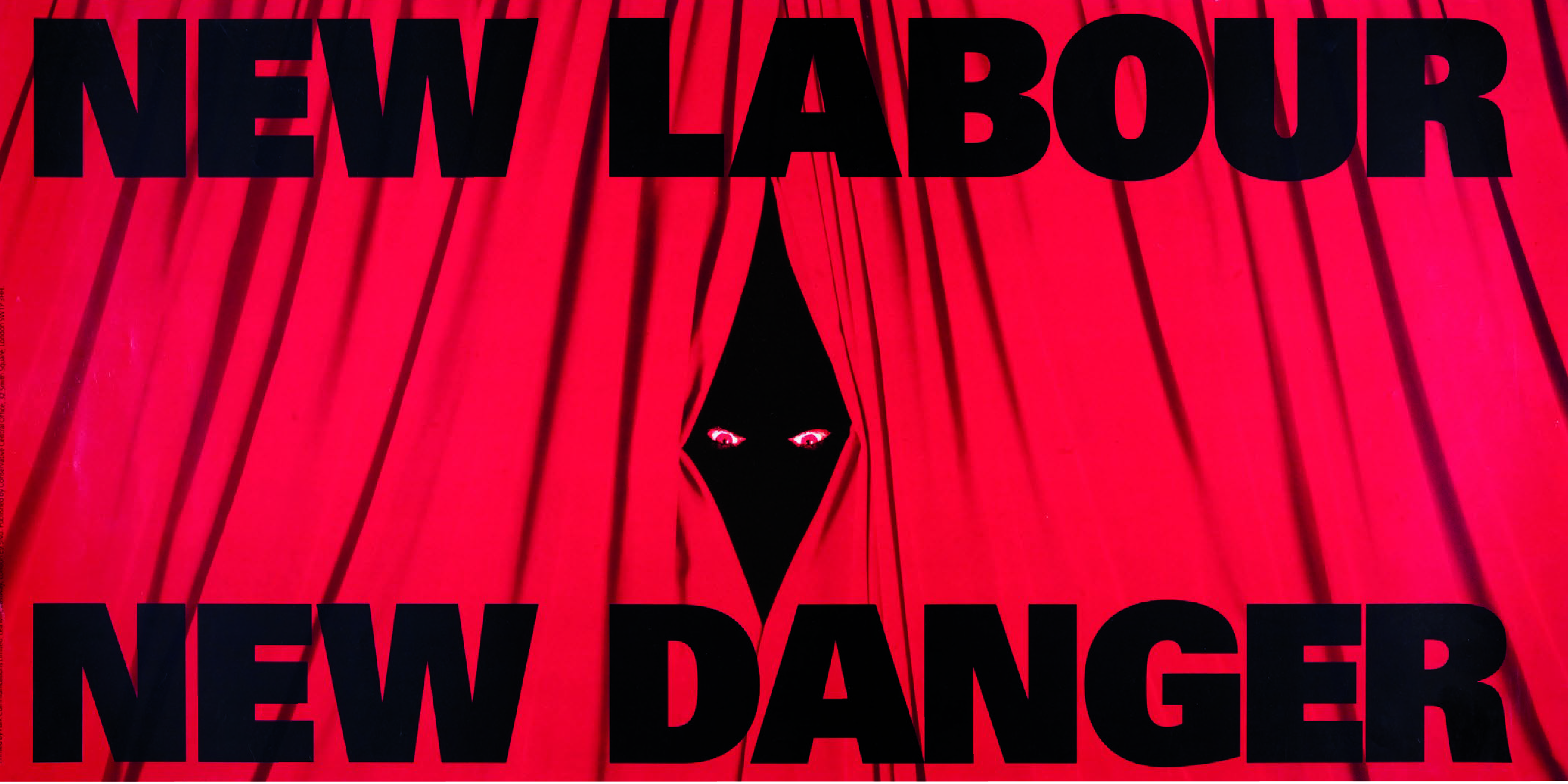

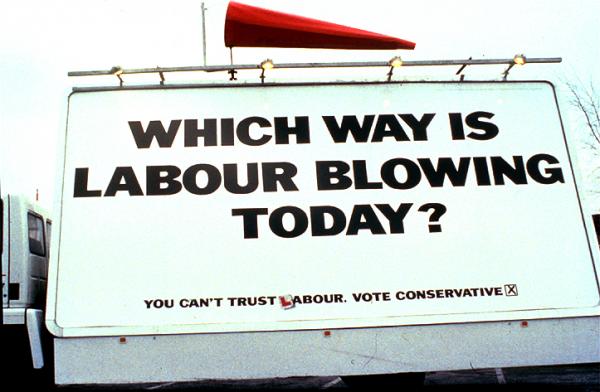 Traumatic? Liberating? Rejuvenating? How do you look back on leaving Saatchi & Saatchi twenty years later?
Traumatic? Liberating? Rejuvenating? How do you look back on leaving Saatchi & Saatchi twenty years later?
Shame we had to, but it’s great fun.
Who’s idea was it to start ‘The New Saatchi Agency’?
Bill Muirhead and I had occasionally talked of going our own way – as everyone does.
When the majority of the board of Saatchi & Saatchi decided to give in to US shareholder pressure and fire Maurice, against my advice, I thought I am not going to spend the next few years repairing something I told the board and the US shareholders not to break.
So Bill, David Kershaw and I decided to start again.
We three were meeting in my office in Charlotte Street. when we had a call from Maurice and Charles saying they would like to join the partnership.
The only agency positioning anyone knows is ‘Brutal Simplicity’.
Why double the word count and make it less simple, and brutal for that matter?
There’s a huge reason. It is the thinking that has to be brutal, not the execution.
You have to be brutal on yourself, not your clients, not your colleagues, only your thinking. It has to be Brutal Simplicity of Thought.
Have you written ads at M&C Saatchi?
Some Tory stuff.
Some for RBS.
Recently some for Ester Rantzen’s Silver Line.


“Words are Gods. They have the power to make people do things, because they carry ideas.”
“The most powerful of words are small ones. The most powerful of sentences are short ones.”
“If you are smart enough you can write your way round the problem.”
Still feel the same way?
Yes.
So you don’t agree with your old chum Sir John is saying; words are a barrier to communication? (He should try communicating that thought without using them.)
I think you have countered that rather well. And John is an Art Director.
With all the new channels there’s never been a greater need for people who can choose their words well, but never has there been fewer people interested in sweating over the choice of them.
True. I am hoping it is a fad and that it will change.
When ITV first came to the UK, the commercials were pretty dire, but everything produced results.
Fortunately after a while the public became more discriminating, responding to humour, understatement ,seduction and drama.
Never been tempted to break away from Saatchi’s? Sinclair & Sinclair maybe?
Frequently, trouble is I am in business with the people I would start an agency with.
What is more important to communications; Creativity or Psychology?
Creativity, it has psychology running through it.
Name an ad you’d love to have written?
John Webster’s ‘Points of View’ for the Guardian.
Snap!
Who’s the best Creative you’ve managed?
In no particular order: Paul, Jeff, Andrew, Simon, James, Ron, Rita, Alan, Alex, Bill, Martyn, Graham, Tom and Mike. Sorry if I’ve missed someone.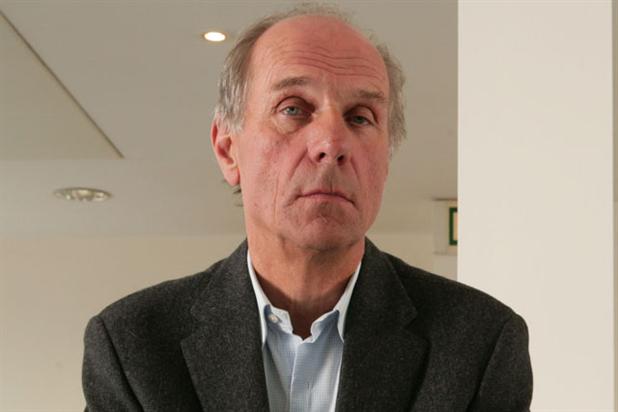 How often do you see something inspiring?
How often do you see something inspiring?
Not often. Not enough.
Thanks for your Jezza.
Very entertaining!
Dave, I’m coming very late to this party. It was however very nice to see corroboration of something I’d been told almost 20 years ago. That writer John McGrath was an old boss of mine in Dublin. He was a wonderful fella. Incredibly generous with his time and criticism and, indeed, his money. I liked him a lot. I played Peter to his Jesus once though. He told me that it was his suggestion that Jeremy met his partner,Paul Arden. I was dubious. No particular reason. But I was. And, now, all these years later, I have it verified. By the man himself. John is, unfortunately, no longer with us. I’d write and tell him if he were. As he’s not, I’m writing to you. I think he’d be satisfied with that.
des
Hi Dave,
Thanks for the posts. I’m new to the copywriting world but can’t seem to stop reading your blog posts.
I don’t think I am getting the reference here. Sinclair mentions:
My portfolio wasn’t cumbersome. It was an A4 sized book containing about 30 plastic sheets that you slipped your copy between.
Not like now, no pictures, just words describing the picture and then the headline and the copy.
I got the impression from the print ads back in the day that it was some nice effective short copy written with picture(s) in the background. I also have seen copy today where there are pictures alongside the copy – albeit, I accept, that the message is not as persuasive for a whole range of reasons which could inspire another blog post in and of itself.
Is there a difference in the copy that Sinclair is talking about than compared to what we see today?